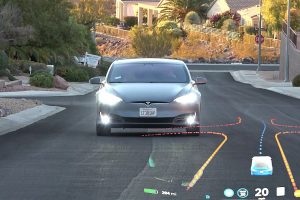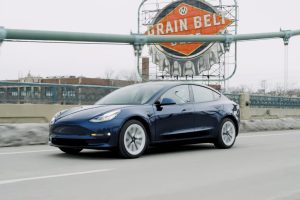Elon Musk commented last night that Tesla could have had a Model S that was capable of 600 miles of range on a single charge. However, Tesla decided not to pursue the what would be an industry-leading metric, because it would impact handling, efficiency, and overall performance negatively.
“We could’ve made a 600 mile Model S 12 months ago, but that would’ve made the product worse imo, as 99.9% of time you’d be carrying unneeded battery mass, which makes acceleration, handling & efficiency worse,” Musk said in a reply to Whole Mars Blog, who stated Lucid may have been the first to deliver a 500-mile EV, but Tesla would be the first to produce it. “Even our 400+ mile range car is more than almost anyone will use,” the Tesla CEO added.
The battle of alleviating range anxiety amongst new electric vehicle owners is something that will eventually subside altogether. However, there are entirely too many people who still bring up concerns of where they will be able to charge their cars, arguing that gas stations are on every corner but EV chargers are not. While this is true, EV chargers are more available than many may think. In even rural South Central Pennsylvania (where I live), there are about seventeen EV chargers, including an eight-stall Tesla Supercharger. All are within ten miles of my house.
Even still, the concerns of how much range is enough still circulate through the community of prospective EV buyers. Everything will require sacrifice. And while most passenger gas cars can travel around 400 miles on a full tank of gas, ABC News says the average American only travels sixteen miles per day for work. U.S. Census data suggests Americans spend around 27.6 minutes driving to work one way. Hundreds of miles of range are not completely necessary.
As Musk also said, more range usually means more batteries, which adds to mass and takes away from the fun driving experience that EVs have been commended for. The Tesla Model S has 375 miles of range, and at one time had over 400 miles of range. The Model S Long Range Plus had 402 miles of range, and one of the primary reasons was “significant mass reduction.”
“Mass is the enemy of both efficiency and performance, and minimizing the weight of every component is an ongoing goal for our design and engineering teams,” Tesla said in a blog post announcing the 400-mile Model S in June 2020. “Several lessons from the engineering design and manufacturing of Model 3 and Model Y have now been carried over to Model S and Model X. This has unlocked new areas of mass reduction while maintaining the premium feel and performance of both vehicles. Additional weight savings have also been achieved through the standardization of Tesla’s in-house seat manufacturing and lighter weight materials used in our battery pack and drive units.”
STRUCTURAL BATTERY PACK
Tesla’s Structural Battery Pack compartmentalizes the idea that mass distribution can be used in an advantageous way. During Battery Day in September 2020, Musk outlined the ideas for the Tesla Structural Pack, and how it was designed.
“The non-cell portion of the battery has negative mass,” Musk said. “We saved more mass in the rest of the vehicle than in the non-cell portion of the battery. So how do you really minimize the mass of the battery? Make it negative.”
The density of the pack not only increases structural rigidity and safety, but it also improves mass and range by strategically placing cells in areas where they would compliment the vehicle.

WHAT ABOUT TESLA’S PLANNED MORE THAN 400-MILE RANGE VEHICLES
Interestingly, Tesla has several vehicles on the way that feature range estimations of over 400 miles. The Cybertruck’s Tri-Motor powertrain, which may take a backseat to the rumored Quad-Motor variant, had a 500+ mile range rating when Tesla still had the configurator for the vehicle available. With the new 4680 battery, Tesla’s vehicles will likely be able to reach the 400-mile threshold without sacrificing too much of the performance or efficiency that Musk spoke of.
The next-gen Roadster, which has sat on Tesla’s backburner for several years, also has an incredible range estimation of 600+ miles. The Roadster may be a special exception to the range rule, but with the astronomical expectations for the vehicle, including the ability to hover, excessive battery weight may take away from the Roadster’s 1.1-second acceleration from 0-60 and its handling due to its small, sporty frame.





